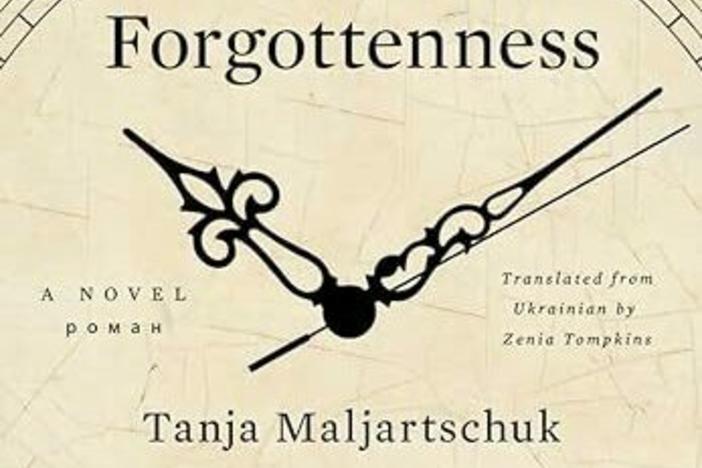Section Branding
Header Content
Spies on opposite sides of the Cold War unite in 'From Warsaw With Love'
Primary Content
Cold War spy tales abound, but few true-to-life accounts of espionage that occurred in the last two decades have emerged — in large part due to the CIA's highly methodical declassification process.
But former Washington Post reporter John Pomfret went the shoe-leather route — interviewing dozens of current and former government officials and intelligence operatives on both sides of the Atlantic and mining declassified files in Poland — to put together his fascinating story of the Polish-U.S. intelligence relationship.
The book's title, From Warsaw With Love, grows from a story Pomfret dug up in 1995, while posted in eastern Europe. Soon after Poland's first post-Communist, freely-elected prime minister took office in 1990, the Polish and U.S. spy agencies began working together. Polish operatives came to the U.S. for training; the U.S. provided millions of dollars in cash and equipment, Pomfret reports.
America's new allies were tested later that year. After Saddam Hussein invaded Kuwait, six U.S. intelligence operatives found themselves trapped in Baghdad. If captured, the high-value group — including the Kuwait CIA station chief — likely would have been tortured and possibly killed, Pomfret writes.
The U.S. turned to Poland, which had companies and citizens operating under contract in Iraq; Poles could move around there easily. Also, Pomfret notes, U.S intelligence officers thought highly of Polish spies' tradecraft.
It's a suspenseful tale of an almost insanely difficult exfiltration. The man who got it done, Gromek Czempinski, was a swashbuckling Tom Selleck look-alike who had spent decades spying against the U.S. under the Communists — and who disregarded direct orders not to execute the escape himself. He cleared obstacles aplenty, the book details, including getting the Americans, posing as Polish workers, the exit visas required to leave the country. (What happened to the woman he romanced to acquire them is uncertain.)
The race to the border brought more peril, Pomfret writes, like the Bedouin who appeared out of the desert, yelling and gesturing wildly, ignoring blandishments of cigarettes and whiskey; Czempinski was sure he would summon an Iraqi militia, and hit the gas with even more urgency.
Poland hoped the rescue would help grease its way into NATO and solidify its separation from its former overlords. But membership was offered only after more Polish intelligence heroics. In 1997, commandos from Poland's special operations unit helped round up Slavko Dokmanovic, who had been indicted at The Hague for the 1991 massacre of 260 wounded Croats in the war-torn former Yugoslavia. Two weeks after his capture, Poland, the Czech Republic and Hungary were invited into the multinational military alliance (though their entry wasn't official until 1999).
Poland remained willing to do almost anything for the U.S, Pomfret relates. In 2001, the country volunteered for the NATO mission to invade Afghanistan — and allowed the U.S. to hold a few alleged terrorists at a clandestine site in the north.
Reportedly unbeknownst to Poland, at least at first, Pomfret writes, suspects there — including Khalid Sheikh Mohammed, believed by the U.S. to have masterminded the 9/11 attacks — were subjected to highly aggressive interrogation tactics. By late spring 2003 the Poles told the U.S. to shut the site down.
Of course, it all blew up. Investigations and reports followed, and in 2014 the European Court of Human Rights ordered Poland to pay two former detainees 100,000 euros each. A dozen years after the black site closed, Poland's former top officials finally admitted involvement.
It wasn't the first time Poland felt burned by the Americans (see Yalta, 1945), but the experience lent truth to a warning from then CIA Warsaw Station Chief Michael Sulick to his Polish counterparts in 1994: "At a certain point we're going to screw you," he predicted, as recounted in the book. "Not like the Soviets would screw you. We'll think we're well-meaning ... but despite our best intentions, we will screw you."
Still, Polish intelligence continued to help the U.S. In the mid-2000s, for instance, its officers in Iran secretly took air samples to help the U.S. learn whether Iran was continuing its nuclear weapons program, Pomfret reports.
Times change. Poland now has a right-wing government that has curtailed judicial independence, attacked LGBT rights — and slashed to the bone the pensions of former Communists who had stayed on after 1990 to help their country. Among them: Gromek Czempinski, who spirited the six Americans out of Iraq in 1990. American politics took a populist turn as well, moderated only slightly by President Biden's 2020 election.
Presumably the two nations' intelligence services continue to cooperate. Pomfret and some of his sources assert repeatedly that Poles and Americans have a natural affinity. Alliances are full of complications and contradictions, though, shifting with changes in leadership and geopolitics; getting along well will never be enough.
Has the CIA used its counterparts in Poland selfishly, as Pomfret seems to believe? Plenty of countries could make that claim. But that might be a baked-in risk when a small, eager-to-please nation deals with a behemoth that holds almost all the cards.
Pomfret hopes his account will be taken as an admonition to the U.S. to treat its smaller partners with more care. Not all will agree this should be a priority. Either way, though, his book is well worth picking up — an engaging story of how spies on opposite sides of the Cold War came together, with plenty of riveting detail from participants in the events.
Journalist Viveca Novak has worked at Time, The Wall Street Journal and other publications. She is working on a project about her mother, who escaped from communist Czechoslovakia and later joined the CIA's clandestine service.
Copyright 2021 NPR. To see more, visit https://www.npr.org.
Bottom Content




